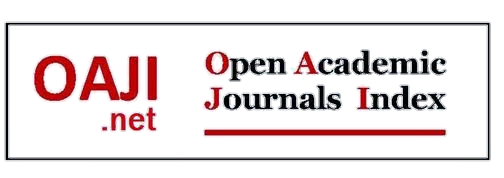Empirical Analysis of Cost Management and Profitability of Manufacturing Companies in Nigeria
1Adesina, Olufemi Dadepo, 2Tiamiyu, Tesleem Ajibola
1Department of Accountancy, School of Business and Management Studies, Federal Polytechnic, Ile- Oluji, Ondo State, Nigeria
2Tiamiyu Tesleem Ajibola, Academic Planning Unit, Federal Polytechnic, Ile Oluji, Ondo State Nigeria,
1ORCID ID 0000-0001-9675-2941
https://doi.org/10.47191/jefms/v8-i2-60
ABSTRACT:
Cost management plays a crucial role in determining the profitability and sustainability of manufacturing firms. The purpose of this research is to analyse the relationship between cost management and the bottom line of Nigerian manufacturing firms, namely those producing industrial and consumer goods. This study uses descriptive statistics and panel regression analysis to examine the relationship between cost management variables and profitability indicators, such as Return on Assets (ROA), Return on Equity (ROE), and Net Profit Margin (NPM). The data for the study comes from the annual reports of companies listed on the Nigerian Exchange Group (NGX) from 2014 to 2023. Results show that administrative expenditures, marketing and distribution charges, and excessive production costs all cut into profits. The report suggests using AI-driven automation, lean manufacturing, and activity-based costing (ABC) to make things more efficient and save money. This study adds to the existing body of knowledge by recommending policies that would improve the industrial sector's financial performance in Nigeria and by incorporating modern methods of cost management.
KEYWORDS:
Cost Management, Profitability, Manufacturing Firms, Activity-based costing, Nigeria.
REFERENCES:
1) Adeniji, A. (2002). An insight into management accounting. Value Analysis Publishers.
2) Adamu, A. (2022). The impact of cost on profitability: A case study of Grand Cereals and Oil Mills Limited, Nigeria. Journal of Business and Economic Research, 15(3), 112-125.
3) Adenikinju, O. (2011). Energy pricing and manufacturing sector competitiveness in Nigeria. African Journal of Economic Policy, 18(1), 67-85.
4) Akinleye, T., & Fajuyagbe, R. (2022). Cost management and financial performance of non-financial enterprises in Nigeria. International Journal of Financial Studies, 10(2), 45-60.
5) Ali-Momoh, B. (2022). Cost management and profitability of Nigerian manufacturing firms. African Journal of Accounting and Finance, 7(4), 134-150.
6) Ashmarine, A., Smith, R., & Khan, J. (2016). Financial leverage and firm performance: A case study approach. Global Business Review, 17(5), 98-112.
7) Awotomilusi, O., Adeyemi, S., & Olayemi, T. (2022). The effect of cost structure on financial performance of quoted manufacturing companies in Nigeria. Nigerian Journal of Economic Studies, 14(3), 76-89.
8) Bazot, G. (2014). Financial intermediation cost and profitability in the manufacturing sector. Journal of Financial Economics, 13(2), 98-112.
9) Brown, T. (2022). Understanding inventory cost management and profitability in manufacturing firms. International Journal of Business Management, 19(3), 215-230.
10) Castenhol, M. (1927). The concept of distribution costs in industrial firms. Harvard Business Review, 5(1), 45-59.
11) Chen, J., Zhang, W., & Li, K. (2019). Cost structure analysis in manufacturing enterprises. Asia-Pacific Journal of Finance & Accounting, 26(4), 301-320.
12) Dahal, B. (2018). Cost structure and profitability analysis in the manufacturing industry. Journal of Economics and Business, 22(3), 150-165.
13) DeltaCPE. (2017). The role of cost management in business operations. Accounting & Finance Journal, 25(2), 78-95.
14) Deloitte. (2020). International accounting standards (IAS) and financial reporting. Deloitte Insights.
15) Evans, P. (2021). The role of supply chain efficiency in cost management. International Journal of Supply Chain Management, 15(2), 130-145.
16) Evans, P., & Thomas, M. (2023). Financial leverage and its effect on profitability. Journal of Financial Economics, 20(4), 189-210.
17) Fadare, S., & Adegbie, F. (2020). Cost management in Nigerian firms: A strategic approach. Nigerian Journal of Management Studies, 16(3), 56-74.
18) Fontaine, C., Haarman, A., & Schmid, S. (2006). The stakeholder theory: A review and application. European Journal of Business and Social Science, 14(1), 112-127.
19) Francisca, O., & Christina, A. (2019). The impact of cost of sales on firm profitability. Journal of Financial and Economic Analysis, 9(4), 55-78.
20) Freeman, R. E. (1984). Strategic management: A stakeholder approach. Pitman.
21) Green, S. (2020). Sustainability initiatives in cost management: A case study approach. Journal of Environmental and Business Studies, 12(2), 65-80.
22) Green, S., & Davis, P. (2022). Return on assets and profitability in the manufacturing sector. Business Review Quarterly, 17(1), 78-92.
23) Gunarathne, N., & Samudrage, D. (2018). Cost structure and financial performance: Evidence from manufacturing firms. Asian Journal of Accounting, 10(2), 145-163.
24) Hayes, A. (2020). Understanding the cost of sales in business finance. International Journal of Accounting & Finance, 18(4), 113-126.
25) Hayes, A., & Mansa, J. (2020). Non-manufacturing costs and business profitability. Business and Finance Review, 21(1), 35-50.
26) Hernandez, L. (2023). The impact of automation and AI on cost management in manufacturing firms. Journal of Business and Technological Innovation, 14(3), 98-115.
27) Hernandez, L., & Lee, K. (2021). Financial leverage and firm performance: An empirical review. Journal of Business and Finance Research, 18(4), 67-88.
28) Johnson, P. (2018). The role of planning in financial success. Harvard Business Review, 32(3), 145-162.
29) Johnson, P., & White, T. (2021). Labor cost efficiency and automation in manufacturing firms. Industrial Economics Review, 22(2), 90-105.
30) Jones, B. (2021). Profitability and its determinants in industrial firms. International Journal of Financial Analysis, 16(1), 56-72.
31) Lawal, T. (2017). Cost control and its impact on financial sustainability. Nigerian Journal of Financial Studies, 13(2), 45-60.
32) Lee, J. (2019). Overhead cost minimization strategies in industrial firms. Journal of Business Administration, 11(3), 99-113.
33) Lyndon, J., & Paymaster, R. (2016). Inventory cost management and profitability in Nigerian breweries. Journal of Business and Economic Research, 14(1), 78-93.
34) Mamidu, A., & Akinola, J. (2019). Cost management and productivity in Nigerian manufacturing firms. African Journal of Economics and Finance, 20(3), 110-128.
35) NBS. (2020). The impact of regulatory constraints on manufacturing firms in Nigeria. National Bureau of Statistics Report.
36) Oyerogba, E., Smith, P., & Akpan, M. (2014). Cost management strategies and firm performance: Evidence from Nigeria. African Journal of Business and Economic Studies, 12(2), 135-150.
37) Paulam, R., & Wibowo, T. (2019). The role of cost structure in determining firm profitability. Asia-Pacific Journal of Finance, 19(3), 89-104.
38) Ready Ratios. (2020). Financial ratios and performance evaluation. Financial Reporting and Analysis Journal, 17(1), 45-65.
39) Smith, A. (2020). Strategic cost control in industrial firms. Journal of Business Strategy, 22(3), 78-90.
40) Smith, A., & Brown, T. (2020). Profitability and financial stability in the manufacturing sector. Economic Perspectives Quarterly, 19(2), 101-118.
41) Taylor, D. (2019). The role of profitability in business sustainability. Business and Finance Review, 21(4), 90-110.
42) Taylor, D. (2020). Lean manufacturing principles and cost efficiency. Manufacturing Management Journal, 15(2), 130-145.
43) Tulsian, P. (2014). Operational efficiency and financial performance: A case study. Journal of Business Analysis, 11(3), 55-78.
44) UNIDO. (2019). Competitiveness and industrial performance in Nigeria. United Nations Industrial Development Organization Report.
45) Yusoff, W., & Alhaji, I. (2012). Stakeholder theory and business efficiency. Journal of Business Ethics, 20(1), 145-168.
















